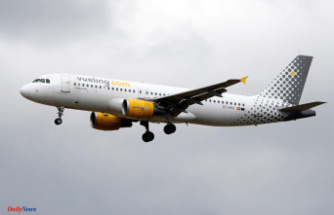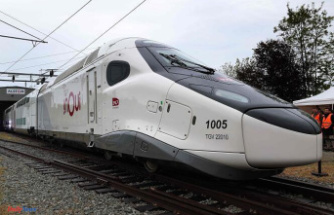The Coupé RS crowns the Enyaq series from Skoda. The electric crossover convinces - but differently than expected. It scores with lots of space, a good range and superior driving performance. But there are also points of criticism: the high weight and price and the somewhat rough chassis.
Lots of power, streamlined chassis and a dynamic body design: The Skoda Enyaq Coupé RS iV presents itself as the sporty alternative to a classic, boxy sister model. The real advantages of the electric car, which can be painted mamba green on request, lie elsewhere than in fast corners.
The cropped rear makes the Enyaq Coupé appear slim and sleek at first glance. At the latest when the 4.65 meter long compact crossover is parked next to a normal car, its spacious dimensions become visible. Nevertheless, the roof line borrowed from the sports car design looks overall more coherent than in one or the other competitor. As an aesthetic purchase argument, it should therefore be good, at least for proven friends of the SUV coupe style. Also because the disadvantages in terms of space are hardly significant: Both on the back seat and in the trunk there is hardly less generous space than in the normal Enyaq.
In addition to the design, the technology is the most important difference between a coupé and an SUV. For the top model, Skoda initially only offers the strongest of the drive packages available in the group's own MEB shelf. The core are two electric motors, one on the front axle and the other on the rear axle. Together they form an all-wheel drive if required and provide up to 220 kW/299 hp of power. As is usual with e-mobiles, the generous torque of 460 Nm is available right from the start, which means that the 2.3-ton SUV feels much lighter on its feet than it is according to the scales, at least when starting at traffic lights and overtaking.
In the curve, the dynamic lightness only applies to a limited extent. The RS model is strong and powerful in every situation, but also very heavy. Once the considerable crowds get excited by brisk changes of direction, people soon prefer to take it easy. The SUV coupé is significantly less athletic than the brand's other RS models. Rather, he gives the sovereign glider for the long distance. However, the chassis, which has been reknit to sportiness, is a bit annoying. Especially in combination with the optional 21-inch wheels, it copies the road conditions one-to-one onto the backs of the occupants.
Too bad, because another technical detail would make the coupe a very good electric touring car: the large battery. In the top model of the series, the example with 77 kWh is always in service, which according to the standard is good for a distance of 520 kilometers. In practice, however, the values were not even close to being reached, even at mild temperatures. With a high proportion of freeways, the crossover had a range of around 400 kilometers - sufficient for everyday use, even if it was not a dream value.
If you max out the drive power, you may have to be at the socket around 100 kilometers earlier. This is also reflected in the consumption values: When driving steadily on the expressway, the Enyaq gets by with well under 20 kWh, but under stress it can sometimes be 25 kWh or more.
But the Skoda convinces with a decent charging speed. Up to 135 kW are possible at the fast charging station, which means that the almost empty battery can be filled to the usual 80 percent in around 30 minutes. A battery preconditioning could possibly get a little more speed out; However, the battery management has so far dispensed with this. The on-board sat nav has suitable route planning, including suggested charging stops. As a rule, however, charging at the home wall box should be sufficient, where the Skoda loads the storage tank with 11 kW of power overnight.
A large car with a long range does not come at a low price: a buyer has to invest at least 61,550 euros, a good 10,000 euros more than for the standard Enyaq in the all-wheel drive version with the same battery and slightly less power. Even the technology twin VW ID.5 GTX is around 5000 euros cheaper. This is compensated for with extensive equipment. These include sports seats, 20-inch wheels (21-inch for an extra charge), three-zone air conditioning, reversing camera and a panoramic glass roof. Optionally, there is a heat pump for range-saving heating as well as various technology packages, which also include adaptive dampers that soften the chassis hardness somewhat.
The bottom line is that the Enyaq Coupé scores less with its sporty look than with its generous autobahn range and high drive sovereignty. Anyone who doesn't mind the somewhat rough chassis and likes the sleek rear line will get a very spacious touring car in the RS. If you can do without a sports look and the small plus in driving dynamics, you can drive with the standard Enyaq but not worse - and significantly cheaper.
Technical specifications












